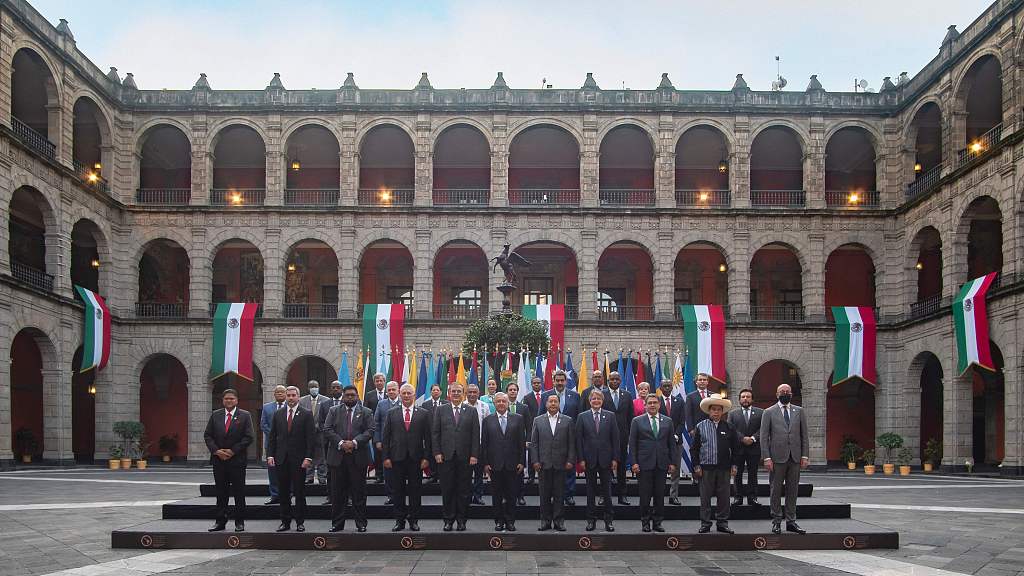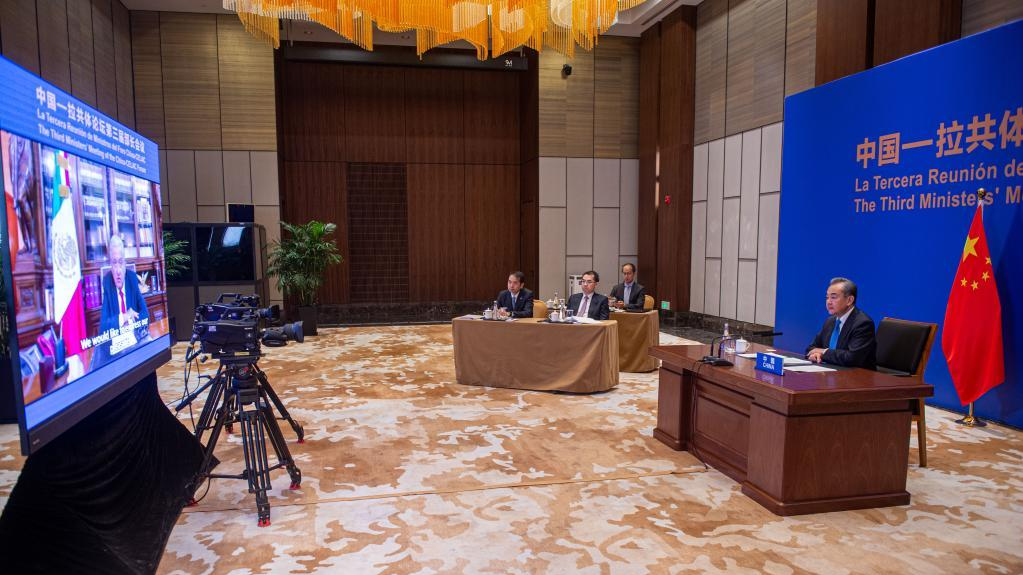
Presidents and representatives pose for group pictures at the Sixth Summit of the Community of Latin American and Caribbean States (CELAC) at the National Palace in Mexico City, Mexico, September 18, 2021. /CFP
Presidents and representatives pose for group pictures at the Sixth Summit of the Community of Latin American and Caribbean States (CELAC) at the National Palace in Mexico City, Mexico, September 18, 2021. /CFP
Editor's note: Hamzah Rifaat Hussain, a former visiting fellow at the Stimson Center in Washington and former assistant researcher at the Islamabad Policy Research Institute, is a TV anchor at Indus News in Pakistan. The article reflects the author's opinions and not necessarily those of CGTN.
Numerous Latin American and Caribbean states are now looking beyond the United States for sustainable, tangible and growth-oriented economic cooperation with the China-CELAC Joint Action Plan for Cooperation set to commence in 2022.
Constant neglect by the Biden administration and lack of attention paid to lingering economic problems on the continent has resulted in respective leaderships shunning American geopolitical designs for more meaningful engagement. The deal that was signed in December 2021 between a bloc of 33 countries, including Argentina, Brazil and Mexico, outlines plans for greater linkages between corporations, sovereign governments and financial institutions, with this joint action plan also providing excellent avenues for cementing economic ties in a region which has been historically reliant on American assistance.
The shift in Latin American, Central American and Caribbean priorities became evident with Argentina's latest decision to join the Belt and Road Initiative this year which puts it among countries such as Bolivia, Chile and Peru. Additionally, the Uruguayan government had been pressing to ink a free trade deal with China in October 2021, and Ecuador is also set to sign a trade deal with debt renegotiations with China in 2022.
The reasons for these trends are obvious where the United States, with its geopolitical ambitions, has constantly ignored the economic plight of the region. Such ignorance laced with misguided foreign policy priorities has resulted in blowback effects with countries such as Nicaragua eschewing political engineering by the Biden administration on Chinese sovereign issues for more meaningful economic engagement.
With such ignorance continuing unabated, the China-CELAC Joint Action Plan of 2022 carries added significance. Note that the Inter-American Development Bank (IDB) has predicted that the region needs to invest at least 3.1 percent of its GDP into infrastructure annually to meet its Sustainable Development Goals (SDG's) by 2030. So far, historical reliance on the United States for economic assistance has not yielded desired dividends despite high expectations that the Biden administration from 2021 onwards would address the downward trajectory in inter-American relations.

Chinese State Councilor and Foreign Minister Wang Yi chairs the third Ministers' Meeting of the Forum of China and the Community of Latin American and Caribbean States (China-CELAC Forum) and delivers a speech via video link, Dec. 3, 2021. /Xinhua
Chinese State Councilor and Foreign Minister Wang Yi chairs the third Ministers' Meeting of the Forum of China and the Community of Latin American and Caribbean States (China-CELAC Forum) and delivers a speech via video link, Dec. 3, 2021. /Xinhua
Note that U.S. President Joe Biden has yet to visit the region since assuming office, and Vice President Kamala Harris visited just twice. Also, her trip to Guatemala and Mexico was marred with controversy, as talks centered on refugees and migratory issues rather than concerted attempts at inking economic deals which could help both countries. As a result, negative sentiment has festered due to Washington D.C.'s own foreign policy blunders in both countries and beyond.
The IDB has also warned that 59 percent of the projected amount as part of the continent's GDP needs to be invested in new infrastructure. The Joint Action Plan of 2022 provides greater prospects for cooperation through the Belt and Road Initiative in this regard, which encompasses more state-sponsored Chinese infrastructural investment in the region. As the pandemic stymied transportation networks throughout the continent and the Caribbean, the joint plan seeks to incentivize greater private sector investment by highlighting nine focus areas, such as technology, finance, agriculture, aviation, information technology, customs and tourism.
Another aspect that will impact GDP growth rates is the domestic manufacturing capacity for the respective countries for which the Joint Action Plan of 2022 focuses on the implementation of Fourth Industrial Revolution technologies, such as artificial intelligence, cloud computing and robotics. These technologies allow for smoother production and uninhibited supply lines, which have been well-received by countries such as Argentina, Mexico and Chile.
This agreement is set to materialize in an apolitical setting. However, U.S. foreign policy continues to lack constructive approaches to Latin America due to the Biden administration's neglect of matters in its immediate neighborhood. As the sole technological superpower of the globe, the United States has not provided any blueprint for Latin American economies to compete in the pandemic era. Since 2000, it has lost its status as the primary trade partner of all but one South American country. The post 9/11 era has witnessed wars, interventions and humanitarian crises, with the current Ukraine quagmire being a grand example of misguided priorities. However, for Latin America, the Caribbean and Central America, prospects under the China-CELAC Joint Action Plan for Cooperation provide plenty of scope and optimism.
(If you want to contribute and have specific expertise, please contact us at opinions@cgtn.com.)

